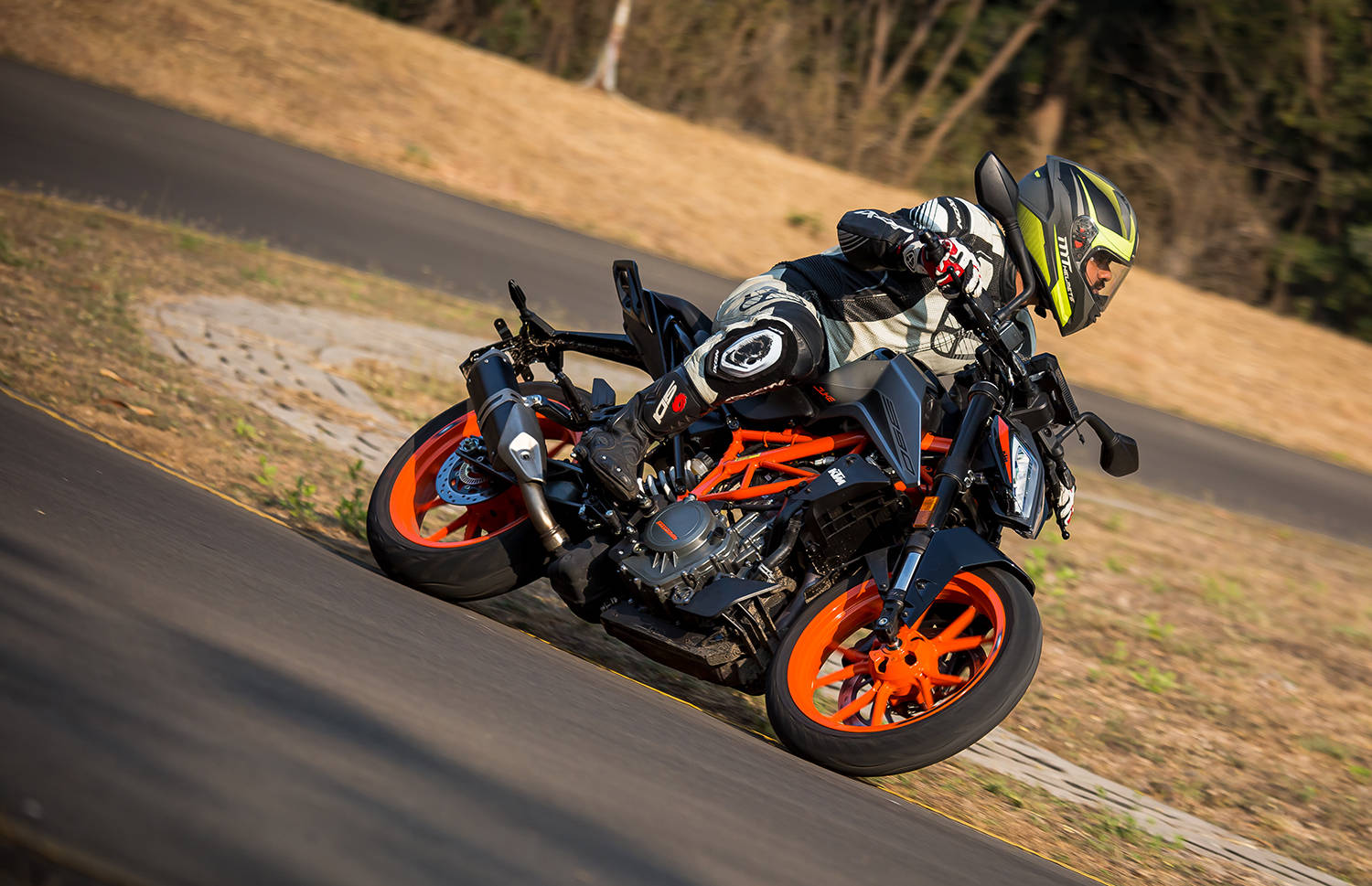2020 KTM 390 Duke BS6: First Ride Review
Published On Feb 25, 2020 By Jehan Adil Darukhanawala for KTM 390 Duke (2017-2023)
- 8717 Views
- Write a comment
How significant are the little changes made on the BS6-compliant 390 Duke?

The last significant update that the KTM 390 Duke received was in 2017. It was a major overhaul in design as well as on the mechanical front, making the 390 Duke sharper and more engaging than ever before. For 2020 and beyond, the largest single-cylinder Duke in India has received a few updates and now meets BS6 emission norms. In doing so, KTM has had to up the asking price by nearly Rs 5,000, with the 390 Duke BS6 now retailing at Rs 2.52 lakh (ex-showroom Delhi). So, what do you get for the extra money?

1. A cleaner engine without a drop in performance
With the step up to BS6 norms, most motorcycle manufacturers had to retune their existing engines to provide cleaner emissions. Hence, most motorcycles have seen a minor drop in performance with a slight increase in overall weight. Thankfully, KTM has managed to retain the same power output of 43.5PS and 37Nm as before. Kerb weight has gone up by 4kg, the 390 Duke BS6 now tipping the scales at 167kg.
The extra kilos it has put on is thanks to a revised exhaust which is now routed to run below the engine rather than around the cylinder head as before. As a result, ground clearance has gone down to 151mm, 24mm lower than its BS4 model. This is a cause of concern as you run a greater risk of scraping the exhaust now. KTM has provided a small protective bash plate of sorts which does extend a few millimetres lower than the exhaust pipe. How effective is the plate? We would only know once we get our hands on the bike for a road test.

2. A bi-directional quickshifter
KTM has equipped the 390 Duke BS6 with the same Quickshifter+ unit as found on the 390 Adventure. The system is a bi-directional unit which allows for clutchless up as well as down shifts. At Rs 2.52 lakh, the 390 Duke becomes the most affordable motorcycle in India to get this feature. The next motorcycle with a bi-directional unit as standard is its twin-cylinder sibling, the 790 Duke, which costs thrice as much.
The reason why KTM has managed to offer such a vital performance update at such a cost-friendly price is that the system is a semi-mechanical one. On traditional quickshifters, you get a pressure switch at the shift lever that detects the imminent shift. This KTM unit measures the rotation of the gear shifter shaft via a sensor located on the right side of the engine. Hence, the signal sent to the ECU to cut the ignition spark to unload the gearbox for the upshift takes longer than than traditional quickshifters. Another niggle that we experienced was that once you go beyond 8000rpm, the quickshifter doesn’t work as there is too little time to cut the ignition to allow a seamless upshift.

Clutchless downshifts are executed but this isn’t an autoblipper. When a downshift is detected through the rotation of the shaft, this system injects a small amount of fuel into the engine to increase the rpm a little bit to carry out the downshift. It is not as seamless as it sounds as this might lead to the rear wheel hopping. But due to the presence of a slipper clutch, the rear wheel isn’t unsettled.
The above explanation might be a bit too technical to understand but simply put, the feature is not as advanced as we had earlier believed. Majority of the owners will not be too bothered by its shortcomings as this will prove to be a quite handy tool in city stop-go traffic situations as it will still allow for clutchless shifts. However, those of you looking to take the 390 Duke to a racetrack will be disappointed with the performance of this quickshifter.
For existing 390 Duke owners who are looking forward to retrofitting the quickshifter on their bikes, you should head here to read about it.

3. New colour schemes
No longer is KTM offering an orange paint scheme for the 390 Duke. The motorcycle now comes in two colours -- grey and white, the former being our pick of the two. The grey bike (pictured in most of the images in this story) with its orange frame and black rear end does look more attractive than the white one. KTM is going for a rather understated look with the white scheme as there is simply not much colour that pops out.

Verdict
To sum it all up, KTM has given the 390 Duke the aforementioned updates to justify the extra Rs 5,000 that you would have to pay over the old bike. Considering that not much has changed in the performance as well as dynamic ability of the bike, it should still be a delight for those who are looking to step up from 200cc-250cc motorcycles, or those looking for an exciting little motorcycle to thrash around on a winding mountain road. However, the quickshifter’s shortcomings means that it is more of a bragging point in your friends circle rather than an actual performance-oriented piece of kit that helps you shave off milliseconds on the track.
